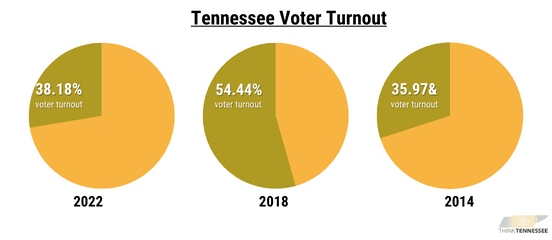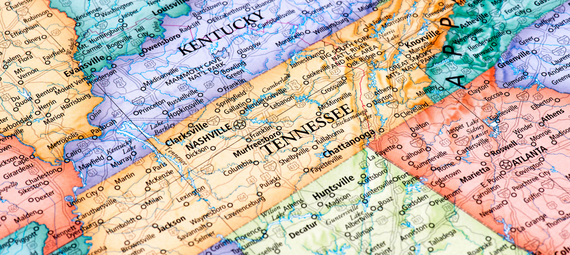The 2022 midterm elections have come and gone, with some state races and control of Congress still undecided. As we wait to hear the final election results from across the country, below is a summary of what happened in Tennessee’s races for governor, U.S. House of Representatives, and the state legislature.
- Governor: Bill Lee won re-election (65.3%) over challenger Dr. Jason Martin (32.6%).
- U.S. House of Representatives: As always, all 9 U.S. congressional seats were up for grabs, including the three new districts in Middle Tennessee as a result of the state’s redistricting process. Republicans won all three of those seats, which means the Tennessee congressional delegation will now include 8 Republicans and 1 Democrat.
- State Legislature: The partisan breakdown in the state legislature shifted slightly with two Republican gains in the state House, meaning there will be 75 Republicans and 25 Democrats in the House, and 27 Republicans and 6 Democrats in the Senate.

While election officials are still busy working to certify the results, we are able to share a few initial takeaways about how things went: Tennessee saw low voter turnout, uncompetitive races, and ballot issues in newly drawn congressional districts.
Voter Turnout Was Less Than 40%
Though some battleground states are seeing high turnout rates, nationwide – including here in Tennessee – voter turnout looks to be significantly lower than in 2018.
While we wait for official data, we can use the total number of votes cast for the ballot’s top race, governor (1,737,454), as a proxy for total turnout. With 4,550,026 Tennesseans registered to vote in the state, that is a turnout rate of 38.18% of registered voters.
Compared with previous midterms, this year’s participation was significantly lower than 2018 (54.44%), which had an open gubernatorial seat, but slightly higher than 2014 (35.97%).
More than Half of State Legislative Races Were Not Competitive
Uncompetitive races are an often discussed potential factor in low voter participation. This year, though the governor and U.S. House seats featured challengers, the majority of state legislative races featured only one candidate.
- 53% of legislative races had no challenger: 61 out of 116 legislative races had just one candidate.
- 41% of state Senate races (7/17)
- 55% of state House races (54/99)
- Of those with more than one candidate, only a handful of races were within 25 points of each other.
- Senate District 7 saw the closest margin with 25 points separating incumbent Senator Richard Briggs (62.34%) and challenger Bryan Langan (37.66%).
- In the House, 8 of the 45 races contested came within 25 points. The closest margins were in Districts 41 (5.1 points), 59 (4.76 points), and 67 (1.34 points).
Some Ballot Issues in Newly Drawn Congressional Districts
We saw reports of voters in Davidson, Shelby, and Benton counties receiving ballots placing them in the wrong congressional district. All three of these counties were split into more than one congressional district following this year’s decennial redistricting process. The secretary of state’s office will investigate the issue, but early reports indicate the discrepancy was caused by clerical errors.
Next Steps
We’re planning to share more post-election analysis in the weeks ahead and will be back with an after-action report (similar to the one we released in 2020) early next year. Stay tuned for more updates!




